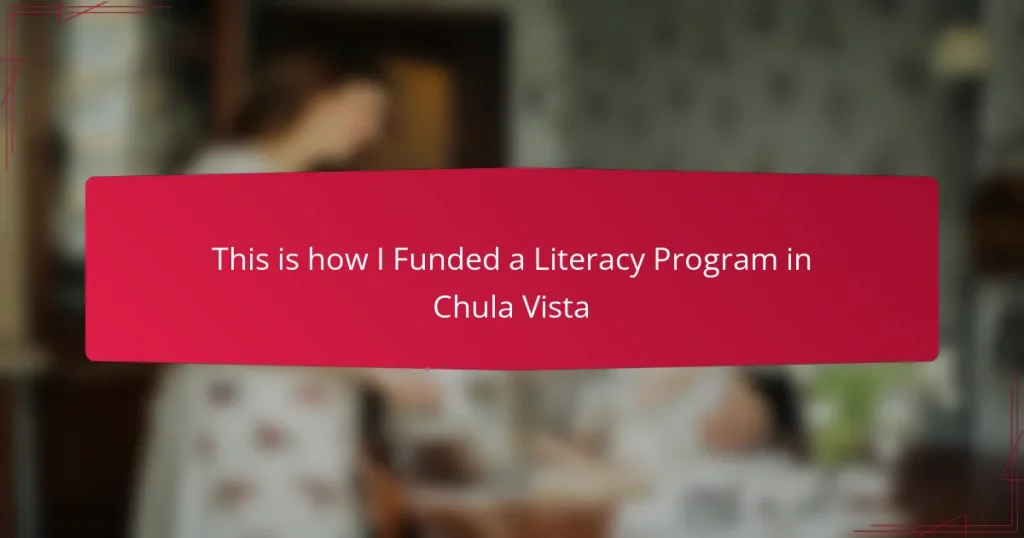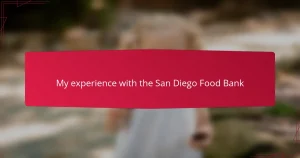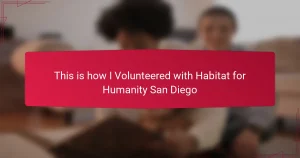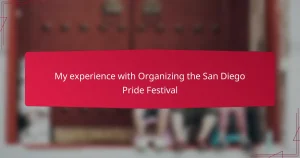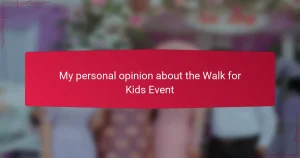Key takeaways
- Clear communication and shared goals enhance family fundraising efforts and motivate participation.
- Engaging the community through personal connections and diverse activities fosters trust and support for the cause.
- Transparency in managing funds and reporting success builds donor confidence and highlights the real impact of contributions.
- Involving local educators and parents in program selection ensures alignment with community needs and encourages collective investment in literacy initiatives.
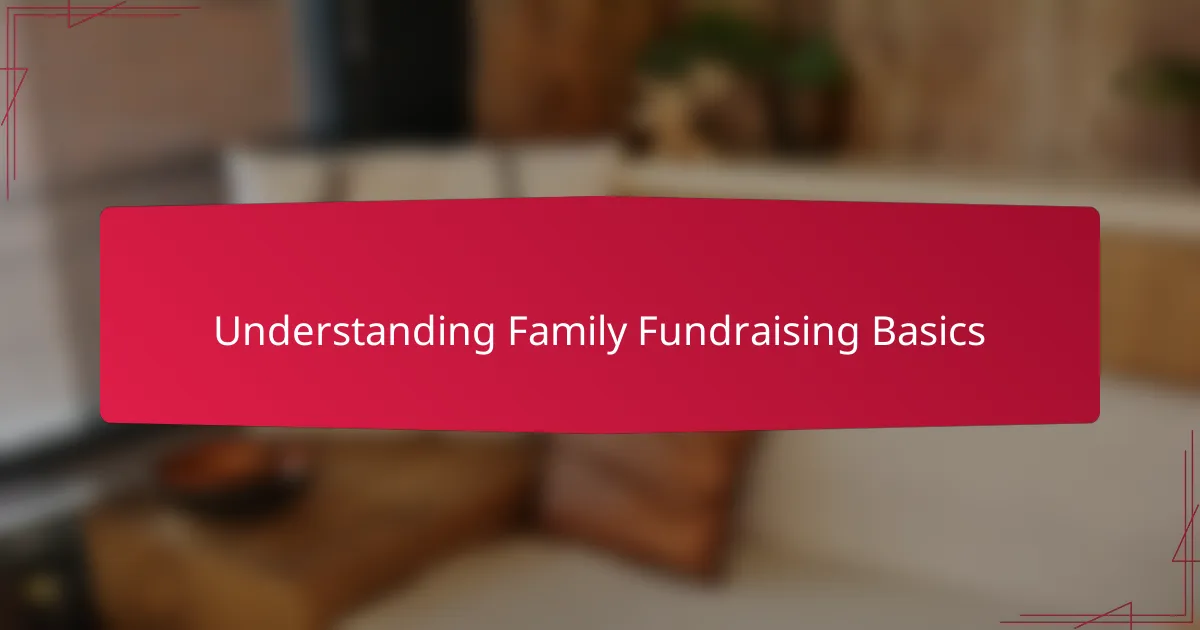
Understanding Family Fundraising Basics
Family fundraising is more than just collecting money; it’s about bringing people together for a shared cause. From my experience helping fundraise for the literacy program in Chula Vista, I realized that clear communication and passion sell the effort just as much as the actual fundraising methods. When families truly understand the impact their contributions make, they’re more motivated to participate.
One practical insight I’d offer is to keep the goals transparent and the process simple. People respond well when they know exactly what the funds will support and how it benefits the community, especially when it’s something as close to my heart as improving children’s reading skills.
Here are some basics I found essential in family fundraising:
– Set a clear, specific fundraising goal tied to your cause
– Communicate openly and often with families and supporters
– Use diverse fundraising methods to engage different people
– Share stories and testimonials that highlight the program’s impact
– Make it easy for families to participate and contribute
– Recognize and celebrate all contributions, no matter the size
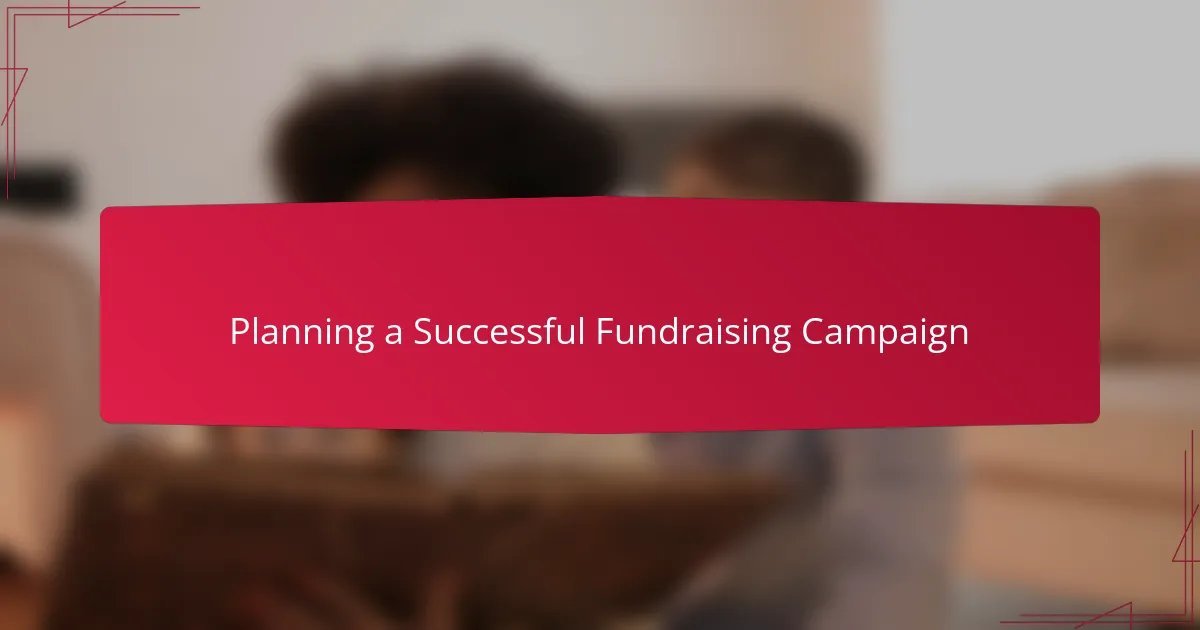
Planning a Successful Fundraising Campaign
When I planned the fundraising campaign for the literacy program, I realized right away that a solid plan wasn’t just a checklist—it was a roadmap that kept everyone on the same page. I made sure to break down the big goal into smaller milestones, so we could celebrate progress and keep momentum alive. Have you ever felt stuck halfway through a project? That’s exactly why mapping out each step matters.
Another thing I found invaluable was knowing my audience. Who were the families I wanted to reach? What inspired them to give? Once I understood this, crafting messages that resonated became so much easier. I remember sharing a single story about a child whose life changed because of reading support, and suddenly everyone wanted to be part of that change.
Finally, I can’t stress enough how important it is to stay flexible. Plans are vital, but so is adapting when things don’t go as expected. For instance, when an event had to shift online last minute, we quickly pivoted and even gained participants who couldn’t attend in person. Isn’t it great when challenges turn into opportunities?
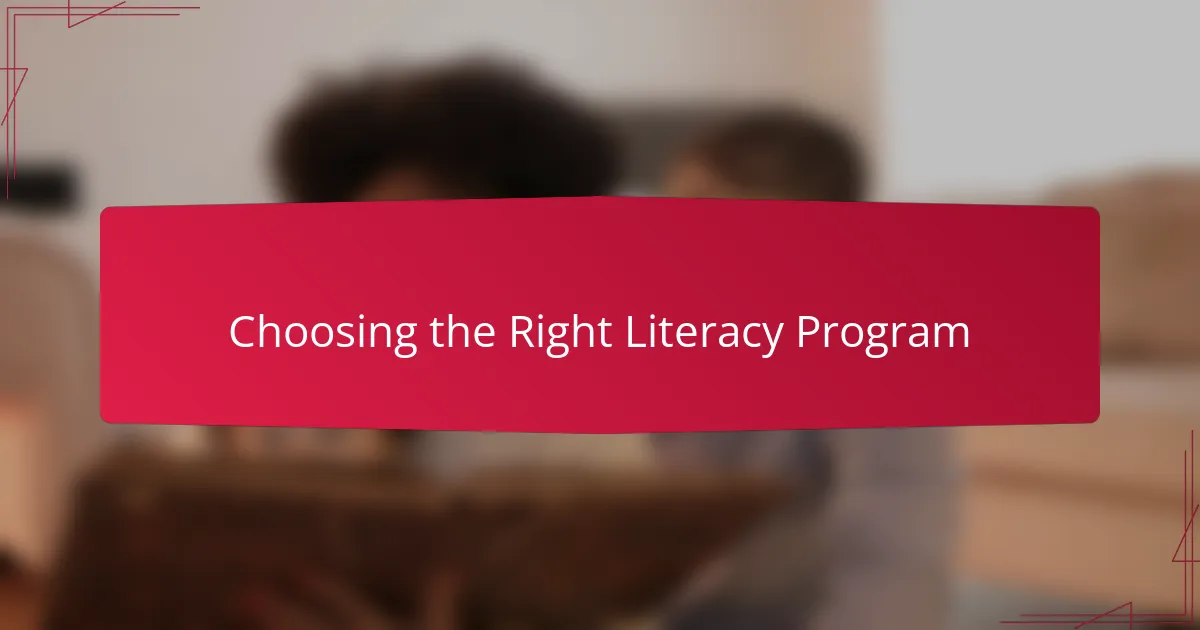
Choosing the Right Literacy Program
Choosing the right literacy program felt like a pivotal moment in our journey. I wanted something that wasn’t just effective but truly connected with the local community in Chula Vista. Have you ever picked a program and then second-guessed if it really fits the needs on the ground? That’s exactly how I approached this decision.
I paid close attention to how the program aligned with the ages and reading levels of the children we aimed to support. It was important to me that the curriculum felt approachable and inspiring for kids who were just starting to find their love for reading. From my experience, a program that’s too advanced or too generic can actually discourage enthusiasm, which is the opposite of what we needed.
Another thing that stood out was involving local educators and parents in the selection process. Their insights were invaluable—they knew what barriers kids face daily and what resources could make a difference. This collaboration made me realize that choosing a program isn’t just about the content, but about building a community that supports learning every day. Have you tried seeking input like that? It can change the whole perspective.
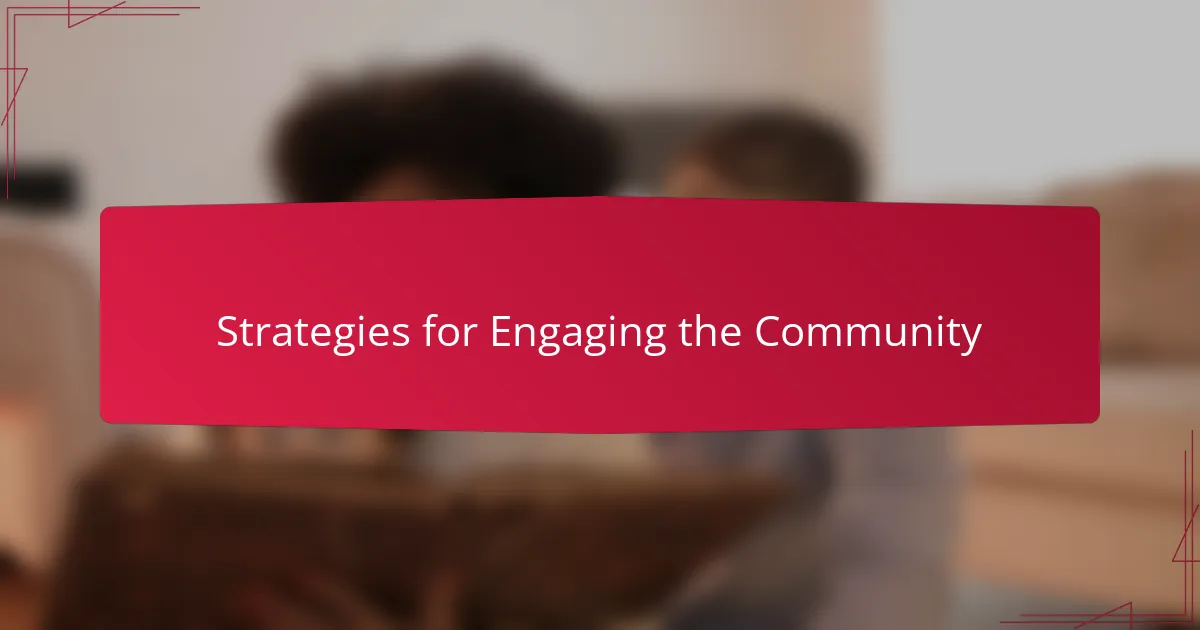
Strategies for Engaging the Community
Engaging the community was the heartbeat of funding the literacy program in Chula Vista. I found that people respond best when they feel personally connected to the cause. Hosting small, informal meetups where neighbors shared their experiences with literacy made a huge difference—it wasn’t just about raising money; it was about building trust and shared purpose.
To keep the momentum, I used a mix of traditional and creative strategies that invited participation and made giving feel rewarding. Here’s what worked well:
- Organizing community read-aloud events to bring families together and highlight the program’s impact.
- Partnering with local businesses to sponsor reading materials and offer matching donations.
- Launching a social media challenge where participants shared their favorite childhood books.
- Creating volunteer opportunities that allowed supporters to get hands-on with the program.
- Hosting storytelling nights to celebrate local voices and draw attention to literacy needs.
These approaches made me realize how powerful community engagement is when it’s genuine and inclusive.
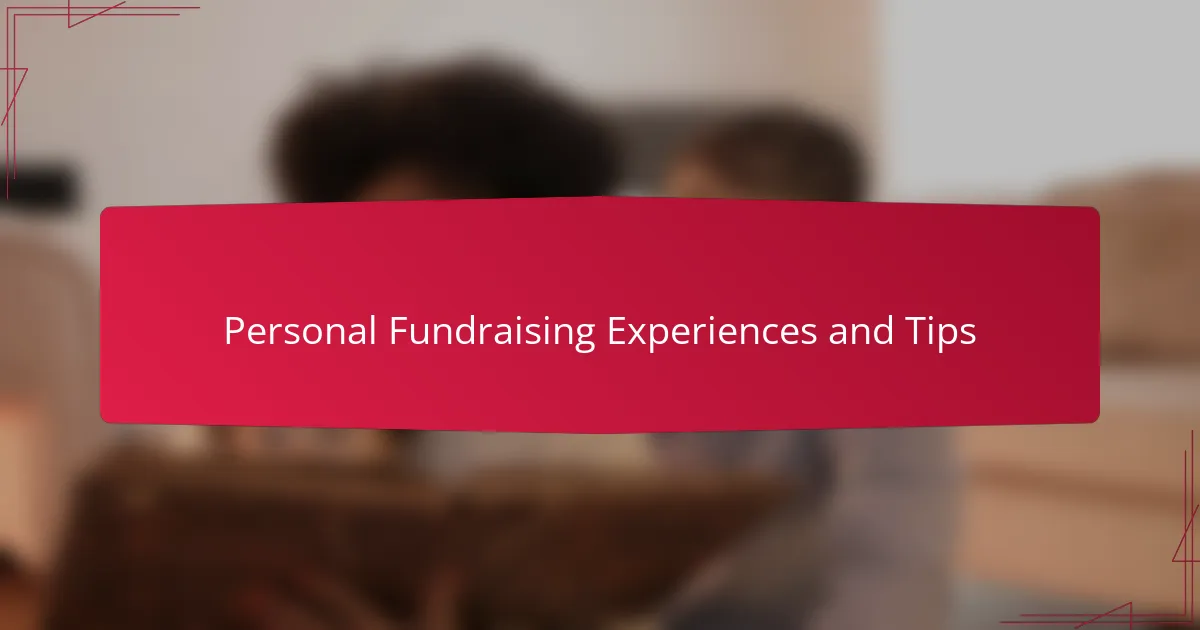
Personal Fundraising Experiences and Tips
Relying on small, consistent contributions from friends and family turned out to be a game-changer for me. I remember feeling overwhelmed at first, but breaking down the fundraising goal into achievable steps made it feel more manageable. It was inspiring to see even small donations build momentum and encourage others to join the cause.
From my experience, transparency and regular updates kept everyone engaged and motivated. Sharing stories about the impact on local children helped donors connect emotionally to the project, making them more willing to support and spread the word.
- Set clear, realistic goals to avoid feeling overwhelmed
- Reach out personally to close contacts before expanding the network
- Use social media updates to share progress and heartfelt stories
- Organize small community events to create a sense of involvement
- Always express genuine gratitude to every donor, no matter the size
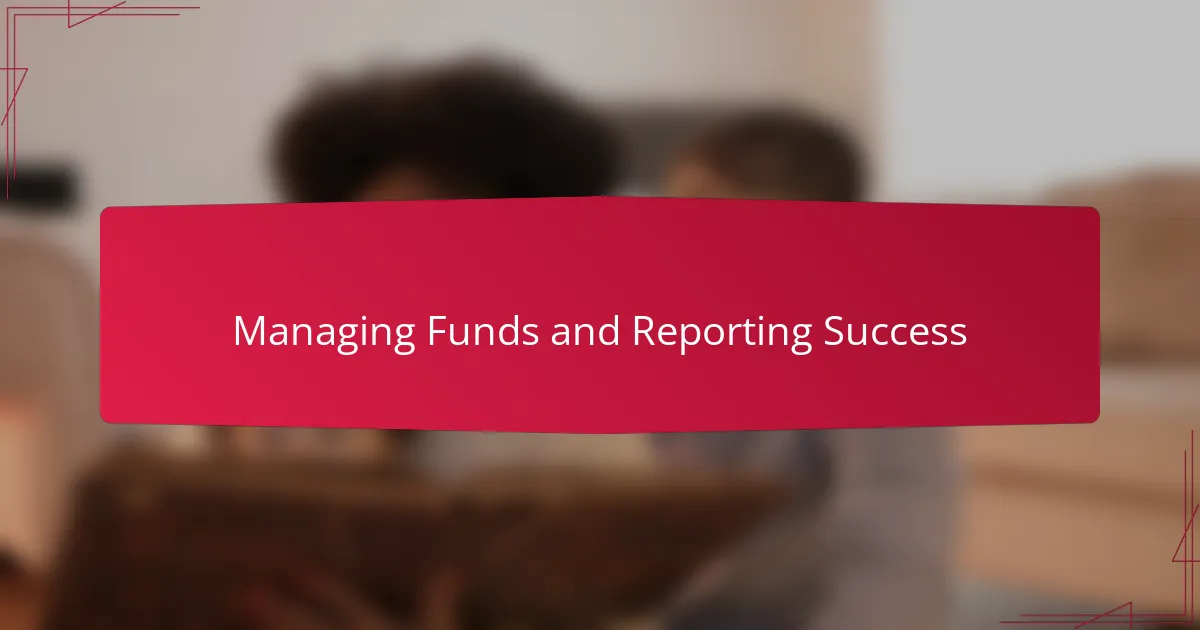
Managing Funds and Reporting Success
Managing the funds for the literacy program required careful tracking and transparency. I made it a point to document every dollar spent so that donors could see the tangible impact of their contributions. This approach built trust and kept me motivated, knowing that every cent was pushing our goals forward.
Reporting success was just as important as managing budgets. Sharing stories from families and kids who benefited added a heartfelt dimension to the numbers. It reminded me that behind every line item was a child’s smile or a family’s hope.
| Funds Management | Reporting Success |
|---|---|
| Detailed tracking of expenses | Sharing personal stories and testimonials |
| Transparency to build donor trust | Quantifiable impact through student progress |
| Regular updates to stakeholders | Highlighting emotional, real-world outcomes |
